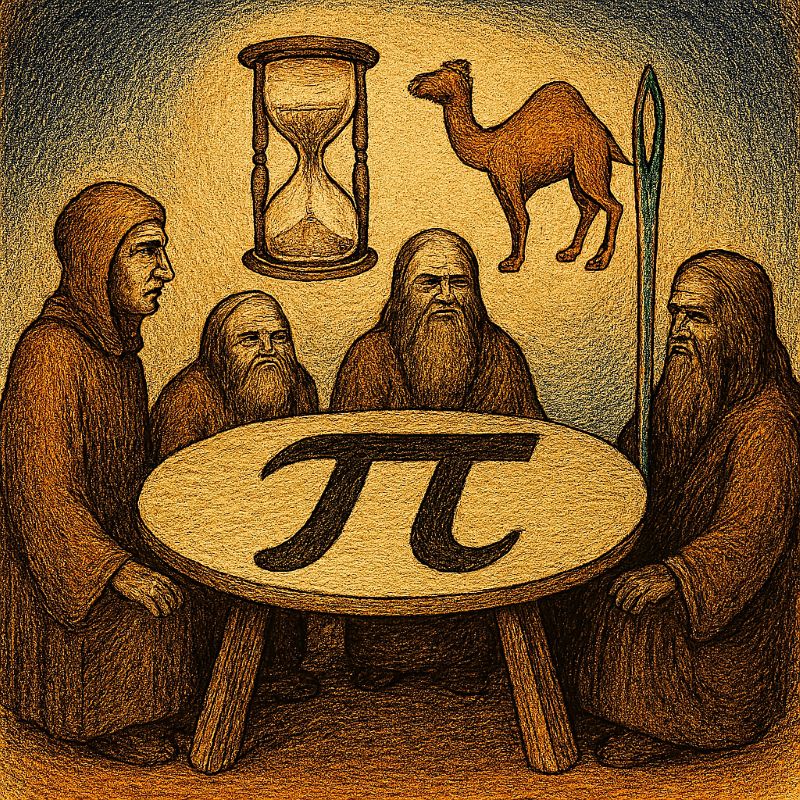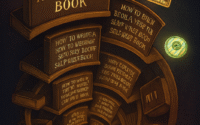The Soul-Merge Protocol and Other Fictions of Peace
Welcome to a world where peace is grooved, souls are spliced like mixtapes, and the camel finally makes it through the needle—no divine intervention required. This post explores the bureaucratic ballet of rebirth as ratified by the elders of Babel-Gum, whose meetings leave no minutes but plenty of footprints. If you’ve ever wondered what happens when metaphysics meets patent law, you’re in the right room. Just mind the spinning floor.

Heaven and hell are no different. Bliss and misery walk hand in hand and talk foot in mouth, without perspiring. No guns are aimed across camps; only the still light of peace, imbibing.
The reborn soul is built from three parts: the original soul, the souls of the three most admired, and the souls of the three most despised. In all cases, of course, only the ‘good’ in each is retained—this lays the groundwork for the next growth. All genetic quirks, however, both natured and nurtured, are preserved and also serve to influence the soul. The rest is left to that most quaint of constraints: the hourglass.
This soul-merge algorithm was ratified by the elders of Babel-Gum on a day without date, in a meeting without minutes, around a rational-pi-shaped table.
The meeting room, also super-circular, was tracked. The table was grooved to fit. The two paired. The meeting spun. All attendees wore musical devices that encouraged foot tapping. The soles of their feet tapped the moving floor; marks were left. At meeting’s end, patterns were analyzed, patents were pended, copyrights were fringed, bank balances were interested. Here, the creative was constantly put through her paces. There was no rest for the fickle muse.
Above the table hung the pendulum oracle of the camel and the needle—proving once and for all that a small enough camel can fit through a large enough needle, provided he is unburdened and she is sharp.
Harry is a recovering satirist, part-time philosopher, and full-time tinkerer of tags. He once wrote a poem about recursion that never ended, and a JavaScript confession that crashed three browsers. His archive spans two decades of metaphysical mischief, theological punchlines, and nostalgic detours. He believes in the transformative power of satire, the elegance of well-placed meta tags, and the occasional necessity of poetic nonsense.


